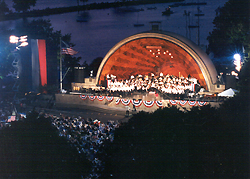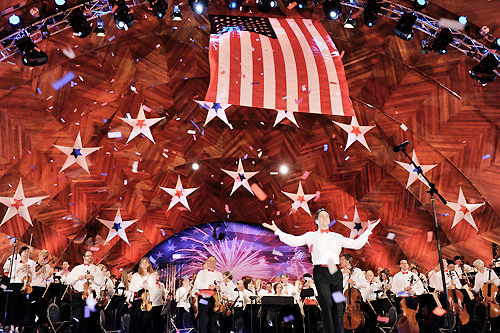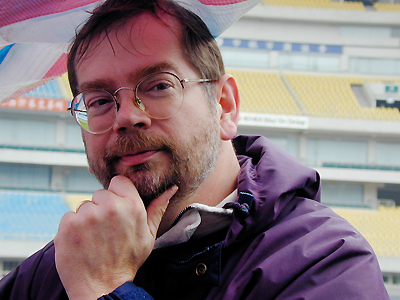
Held annually on the fourth of July in the Hatch Shell at the Esplanade along the Charles River, the Boston Pops Fourth of July Fireworks Spectacular is an institution, with the concert and fireworks show drawing about 500,000 attendees each year.
The last hour of the event, which is marking its 39th consecutive year, is also broadcast to millions on the CBS television network.
The music is fantastic, with conductor Keith Lockhart leading the world-renowned Boston Pops Orchestra in a diverse musical program that includes Tchaikovsky’s 1812 Overture, punctuated with powerful drumrolls and actual cannon fire.
This year’s event featured guest performances by Jennifer Hudson, as well as the Sea Chanters, the U.S. Navy’s official chorus, with actor/singer Michael Chiklis hosting.
Steve Colby serves as the Boston Pops sound designer, and has worked with the organization for more than 35 years. He also provides the broadcast music mix, moving to that chair eight years ago from front of house.

“The biggest change over the years is that audience expectations are much higher than they used to be, and it’s pushed us to up our game as well,” Colby notes. “It used to be easier to make people happy, including ourselves. But the increased quality of the delivery systems, such as modern line arrays, means that every little change we make on stage in terms of microphone selection and placement is more critical.”
Another significant change, he adds, is the advent of digital consoles, providing numerous advantages for a live show with almost 200 inputs and little advance rehearsal time. “The ability to work on scenes in a chronological manner to continuously improve them, rather than constantly starting from scratch, is an enormous step forward in terms of producing higher quality,” he says.
Accurate Signature
Because the show is broadcast on television, a production demand is keeping audio equipment – even microphones – out of camera sightlines as much as possible. The overall strategy in mic’ing the large orchestra is to match transducers and instruments as much as possible in order to obtain an accurate sonic signature.
More broadly, there needs to be good separation between mics to provide each broadcast and live mix engineer receiving a split to have the flexibility they need to tailor the mix exactly to each target audience or performer. With as many as five production engineers involved in mixing front of house, monitors, broadcast feeds and various submixes, the high mic count allows each mixer the most flexibility in building the mixes they need.
These goals lead to a “tight” mic’ing scheme blended with area mic’ing to capture the overall sound of each section.
In terms of building the broadcast mix, Colby explains, “There are many ways of approaching this from a priority standpoint, but I put the sound of the strings first. They’re the most subtle in terms of sound and nuance, and can also be overwhelmed by other facets of the orchestra. I mean, you never worry about the violas overwhelming the trumpets – just the opposite, in fact.

